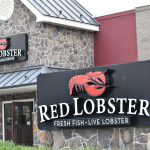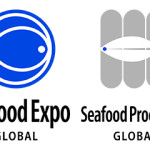Conservation groups are pushing for the creation of marine protected areas that would limit krill fishing in the Southern Ocean at the annual meeting of the Commission for the Conservation of Antarctic Marine Living Resources (CCAMLR), taking place 17 to 28 October in Hobart, Tasmania, Australia.
CCAMLR is an international commission composed of 25 members - 24 countries and the European Union - created in 1982 in response to increasing commercial fishing of Antarctic krill and other marine species. The commission meets annually to determine allowable use of marine resources in the Antarctic and Southern Ocean, including setting catch limits and harvest zones for krill in Antarctic waters.
The Antarctic Ocean Alliance and other conservation groups have proposed marine protected areas, amounting to more than five million square kilometers of Antarctic waters. Consensus among CCAMLR members is building, especially with signals from Russia that it may support the proposal, the nonprofit’s project director, Mike Walker, said in a press release.
“The time for action to safeguard the Antarctic’s waters, the engine room of the ocean, is now. Commitments for almost four million square kilometers of MPAs have been made in the past weeks. This is a clear indication to all the parties participating in the meeting in Hobart that there is a growing momentum for greater ocean conservation, and Antarctic’s oceans and marine life should be next,” Mike Walker said.
The alliance has identified approximately 40 percent of the Southern Ocean that “warrants lasting protection,” the group said in its release. In 2009, CCAMLR members committed to creating a network of large marine reserves but struggled to agree on their boundaries, with proposals for protecting parts of the Ross Sea and East Antarctic failing to gain consensus. In September 2016, the European Union submitted an entirely new proposal to CCAMLR to protect 1.8 million square kilometers of the Weddell Sea. That proposal is under discussion at CCAMLR this week.
Krill fishing forms the backbone of commercial fishing activities in the Southern Ocean, with about 200,000 metric tons of krill harvested annually, the majority of which is used to make fish oil supplements. About 12,000 metric tons of Chilean seabass, or toothfish, is also caught every year in Antarctic waters. Norway’s Aker Biomarine is the primary group fishing for krill in the Southern Ocean, but recent proposals to CCAMLR by Ukrainian and Chinese companies seeking to fish for krill off the west coast of the Antarctic Peninsula have raised alarms that the resource will soon come under greater fishing pressure.
Ron Naveen, CEO of nonprofit Oceanites, which is leading scientific efforts to survey krill stocks in the Southern Ocean, told SeafoodSource not enough is known about how current or increase krill harvesting levels is affecting the larger ecosystem in Antarctica, including whale and penguin populations that rely on the krill as the main part of their diets. The impact of climate change on the Antarctic ecosystem is also a factor that needs to be understood better in order to set appropriate catch limits and determine harvest zones, Naveen said.
“We don’t know where the [CCAMLR] discussions are going to go, but we are urging that any decisions made are based on fact,” Naveen said. “I’m fairly optimistic that there will be significant progress made if we can do that.”






